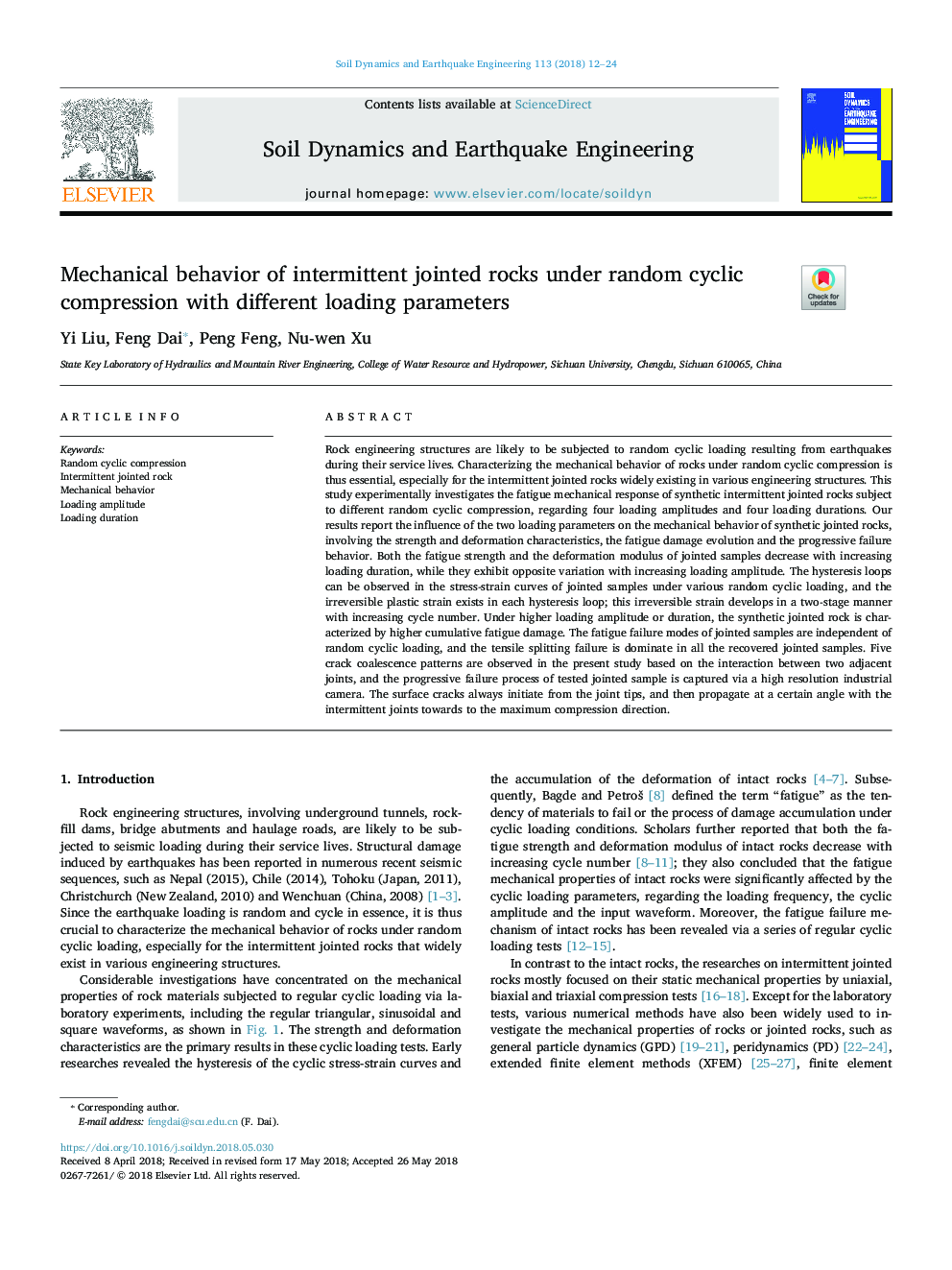| Article ID | Journal | Published Year | Pages | File Type |
|---|---|---|---|---|
| 6769726 | Soil Dynamics and Earthquake Engineering | 2018 | 13 Pages |
Abstract
Rock engineering structures are likely to be subjected to random cyclic loading resulting from earthquakes during their service lives. Characterizing the mechanical behavior of rocks under random cyclic compression is thus essential, especially for the intermittent jointed rocks widely existing in various engineering structures. This study experimentally investigates the fatigue mechanical response of synthetic intermittent jointed rocks subject to different random cyclic compression, regarding four loading amplitudes and four loading durations. Our results report the influence of the two loading parameters on the mechanical behavior of synthetic jointed rocks, involving the strength and deformation characteristics, the fatigue damage evolution and the progressive failure behavior. Both the fatigue strength and the deformation modulus of jointed samples decrease with increasing loading duration, while they exhibit opposite variation with increasing loading amplitude. The hysteresis loops can be observed in the stress-strain curves of jointed samples under various random cyclic loading, and the irreversible plastic strain exists in each hysteresis loop; this irreversible strain develops in a two-stage manner with increasing cycle number. Under higher loading amplitude or duration, the synthetic jointed rock is characterized by higher cumulative fatigue damage. The fatigue failure modes of jointed samples are independent of random cyclic loading, and the tensile splitting failure is dominate in all the recovered jointed samples. Five crack coalescence patterns are observed in the present study based on the interaction between two adjacent joints, and the progressive failure process of tested jointed sample is captured via a high resolution industrial camera. The surface cracks always initiate from the joint tips, and then propagate at a certain angle with the intermittent joints towards to the maximum compression direction.
Keywords
Related Topics
Physical Sciences and Engineering
Earth and Planetary Sciences
Geotechnical Engineering and Engineering Geology
Authors
Yi Liu, Feng Dai, Peng Feng, Nu-wen Xu,
